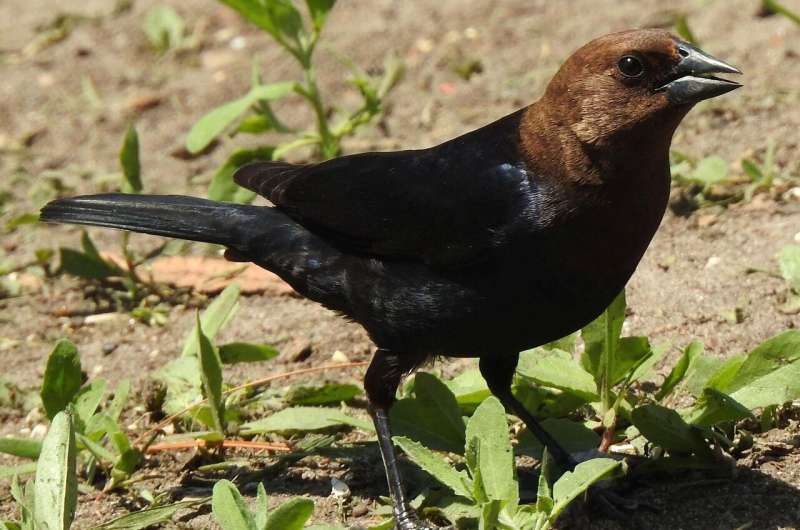Juvenile Brood-Parasitic Cowbirds May Choose Unrelated Adult Females as Role Models

July 7, 2025 report
by Krystal Kasal, Phys.org
contributing writer
edited by Lisa Lock, reviewed by Robert Egan
scientific editor
associate editor
This article has been reviewed according to Science X's editorial process and policies. Editors have highlighted the following attributes while ensuring the content's credibility:
fact-checked
peer-reviewed publication
trusted source
proofread
Unlike most other bird species, the brown-headed cowbird (Molothrus ater) lays its eggs in the nests of other bird species and leaves the host to raise its young—a behavior known as brood parasitism. To become a successful adult, young cowbirds must eventually learn certain behaviors from their own species, including how to find food, mating behaviors, and how to protect themselves from predators. Brood parasitism leaves the young cowbirds without a role model to show them how to behave like their own species or where to find others like themselves to later join the adult flock.
A new study published in Animal Behaviour indicates that the young birds have a tendency to seek out adult females of the same species once they leave the nest of their host family to learn more about their own kind.
The study followed 122 adult cowbirds and seven juveniles over three years in east-central Illinois. The researchers captured adult-juvenile pairs and tested whether the pairs were genetically related and noted the sex to determine more about the social interactions of adult and juvenile cowbirds and whether genetic relatedness influenced their interactions.
Out of the group, only 2 of the 7 juvenile cowbirds had parents within the sample. However, the young birds were never captured together with their parents. The study also found that young cowbirds were significantly more likely to be captured with adult females, despite a male-heavy adult population. These results indicate that the young cowbirds may be specifically seeking out adult cowbirds with female characteristics with no preference, or perhaps no knowledge, of whether or not they are related to them.
The study authors note that the female cowbirds have more similar plumage to juveniles than their male counterparts, likely causing the young birds to seek them out more often. They also note that past studies have shown young cowbirds to be drawn to the chattering noises of adult female cowbirds.
'Early exposure to conspecific chatter calls has also been shown to initiate and facilitate the acquisition of species-specific behaviors in brown-headed cowbirds, further reinforcing the specific importance of early interactions with adult females, related or not,' they write.
This study challenges some earlier findings, which indicated that captured pairs were more likely to be related. However, the authors admit that this study sample was quite small and not all potential parents in the population were included in the sample. More work is needed to determine whether relatedness plays a role in the social interactions of cowbirds.
It is also possible that young cowbirds interact more with male adults later in their development, as the authors state these interactions are needed at some point and the study only followed the birds' earlier development stages.
Written for you by our author Krystal Kasal, edited by Lisa Lock, and fact-checked and reviewed by Robert Egan—this article is the result of careful human work. We rely on readers like you to keep independent science journalism alive. If this reporting matters to you, please consider a donation (especially monthly). You'll get an ad-free account as a thank-you.
More information: Mac L. Chamberlain et al, Adult sex dictates juvenile–adult interactions in brood-parasitic brown-headed cowbirds, Molothrus ater, Animal Behaviour (2025). DOI: 10.1016/j.anbehav.2025.123247
Journal information: Animal Behaviour
© 2025 Science X Network




